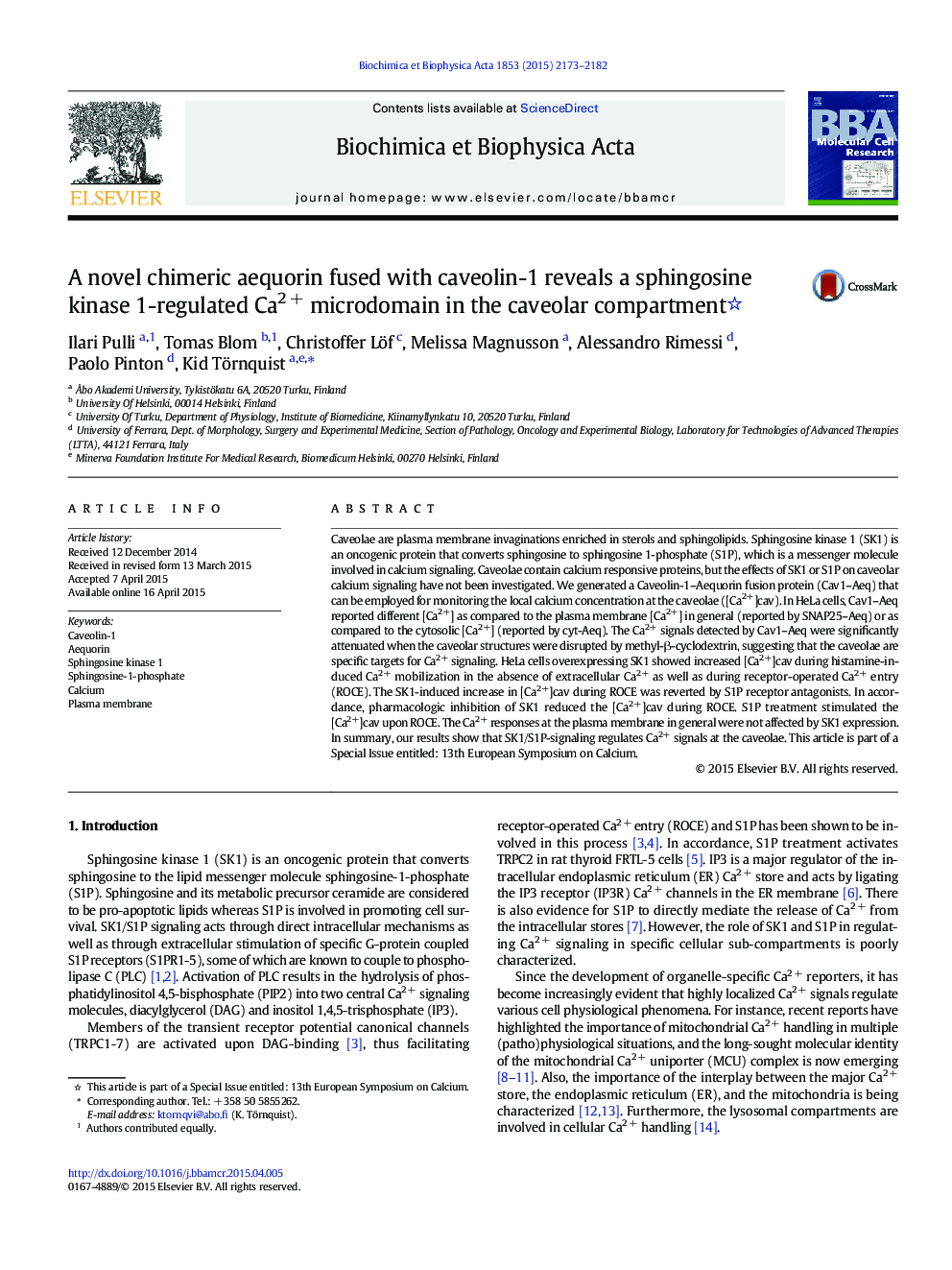| Article ID | Journal | Published Year | Pages | File Type |
|---|---|---|---|---|
| 10801904 | Biochimica et Biophysica Acta (BBA) - Molecular Cell Research | 2015 | 10 Pages |
Abstract
Caveolae are plasma membrane invaginations enriched in sterols and sphingolipids. Sphingosine kinase 1 (SK1) is an oncogenic protein that converts sphingosine to sphingosine 1-phosphate (S1P), which is a messenger molecule involved in calcium signaling. Caveolae contain calcium responsive proteins, but the effects of SK1 or S1P on caveolar calcium signaling have not been investigated. We generated a Caveolin-1-Aequorin fusion protein (Cav1-Aeq) that can be employed for monitoring the local calcium concentration at the caveolae ([Ca2+]cav). In HeLa cells, Cav1-Aeq reported different [Ca2+] as compared to the plasma membrane [Ca2+] in general (reported by SNAP25-Aeq) or as compared to the cytosolic [Ca2+] (reported by cyt-Aeq). The Ca2+ signals detected by Cav1-Aeq were significantly attenuated when the caveolar structures were disrupted by methyl-β-cyclodextrin, suggesting that the caveolae are specific targets for Ca2+ signaling. HeLa cells overexpressing SK1 showed increased [Ca2+]cav during histamine-induced Ca2+ mobilization in the absence of extracellular Ca2+ as well as during receptor-operated Ca2+ entry (ROCE). The SK1-induced increase in [Ca2+]cav during ROCE was reverted by S1P receptor antagonists. In accordance, pharmacologic inhibition of SK1 reduced the [Ca2+]cav during ROCE. S1P treatment stimulated the [Ca2+]cav upon ROCE. The Ca2+ responses at the plasma membrane in general were not affected by SK1 expression. In summary, our results show that SK1/S1P-signaling regulates Ca2+ signals at the caveolae. This article is part of a Special Issue entitled: 13th European Symposium on Calcium.
Related Topics
Life Sciences
Biochemistry, Genetics and Molecular Biology
Biochemistry
Authors
Ilari Pulli, Tomas Blom, Christoffer Löf, Melissa Magnusson, Alessandro Rimessi, Paolo Pinton, Kid Törnquist,
